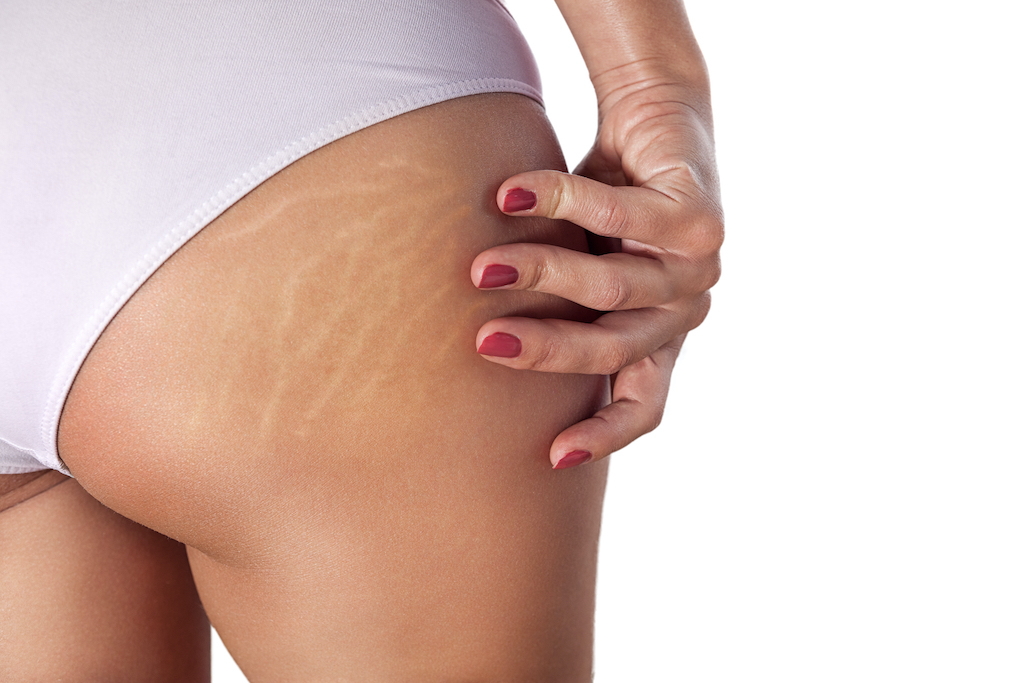Eric Shiah, BA contributed to this article.
Dr. Samuel Lin is a double board-certified Plastic Surgeon and Associate Professor of Surgery at Harvard Medical School who practices in Boston, Massachusetts. Dr. Lin is an active Board Member of the Susan G. Komen for the Cure and Bright Pink Foundations. Dr. Lin is active in both basic science and clinical research with a focus on face/neck/nose surgery (rhinoplasty), breast surgery (reduction, lift, and reconstruction), and body contouring. He collaborates with engineers, scientists, and other plastic surgeons at other institutions within the New England area, nationally, and internationally. He is the editor of several medical textbooks including Aesthetic Atlas of the Head and Neck, Atlas of Body Contouring, and Plastic and Reconstructive Surgery Pearls of Wisdom and Pearls of Wisdom Second and Third Editions. Haute Beauty Expert Dr. Samuel Lin explains what causes stretch marks, what you can do to avoid them, and treatment options.
 Photo Credit: ShutterstockStretch marks are very common and completely normal. They are a normal part of puberty during growth spurts, and many women develop stretch marks after pregnancy. An estimated fifty to ninety percent of pregnant women develop stretch marks before delivery. They most often appear on the stomach, chest, hips, buttocks, and thighs. Although they are not painful, they can affect self-confidence.
Photo Credit: ShutterstockStretch marks are very common and completely normal. They are a normal part of puberty during growth spurts, and many women develop stretch marks after pregnancy. An estimated fifty to ninety percent of pregnant women develop stretch marks before delivery. They most often appear on the stomach, chest, hips, buttocks, and thighs. Although they are not painful, they can affect self-confidence.
What causes stretch marks?
Stretch marks, formally known as striae gravidarum or striae distensae, are caused by tears in the dermis (deepest) layer of your skin that occurs when the skin expands too rapidly. Thus, it is most often seen during pregnancy, puberty, rapid weight gain, and bodybuilding. Although the top surface of the skin remains intact, tears in the dermis eventually heal as permanent scars that become a visible stretch mark. Stretch marks first appear as red or purple, and slowly fade to silvery white with time.
Another cause of stretch marks include prolonged use of steroid creams on the skin, such as those used for eczema treatment. Steroids decrease the amount of collagen in the skin, causing the skin to become thinner and more prone to stretch marks. Medical conditions that affect connective tissue in the body, such as Marfan syndrome, and a family history of stretch marks are also more likely to increase a person’s risk of developing stretch marks.
What can I do to avoid stretch marks?
Although there is no definitive way to completely avoid stretch marks in situations such as puberty and pregnancy, there may be a few things you can do to minimize your risk. Maintaining a healthy weight with a combination of a balanced diet and an exercise routine will help control body changes from happening too quickly. Second, drinking enough water will help keep your skin hydrated and soft. Healthy, hydrated skin does not tear as easily as dry skin. Caffeinated beverages and alcohol have a dehydrating effect on your body, so it is important to compensate with an increased water intake. Additionally, our skin is the largest organ in our body and is very sensitive to vitamin or nutrient deficiencies. It is important to include adequate vitamin C, D, E, zinc, and protein in your diet.
 Photo Credit: ShutterstockNon-invasive treatment options
Photo Credit: ShutterstockNon-invasive treatment options
Although there are many topical creams on the market that claim to get rid of stretch marks alone, there is very limited research to support this. As the scars causing stretch marks are located in the skin’s deepest layer, it is difficult for creams to reach this layer and erase stretch marks.
Laser therapy, however, has the ability to reach deeper skin layers and improve the appearance of stretch marks. Concentrated rays of lights are directed at the stretch marks, which stimulates new collagen growth and smooths out scars. Examples of laser skin resurfacing treatment options you may encounter include Fraxel, Erbium YAG, and CO2. Although laser therapy can significantly improve the appearance of stretch marks, it is unlikely that it can make them completely disappear. Several treatment sessions are typically required before results can be seen.
Are there any surgical treatment options?
Given the risks of surgery, surgical treatments for stretch marks are typically only performed in conjunction with other body contouring procedures. Stretch marks alone are usually not enough to justify undergoing surgery.
Abdominoplasty
Also known as a tummy tuck, an abdominoplasty is beneficial for stretch marks that appear only below the belly button, typically resulting from pregnancy. The procedure involves removing fat and the skin containing the stretch marks from the lower abdomen. The skin is then tightened, which also gives a slimmer aesthetic appearance.
Thigh Lift
For stretch marks around the thighs and buttocks, an inner or outer thigh lift will remove the skin containing stretch marks, as well as excess fat. Thigh lift surgery can help eliminate loose and sagging thighs, and give an appearance of smoother, slimmer hips.
For more information, visit Dr. Samuel Lin's social media:























